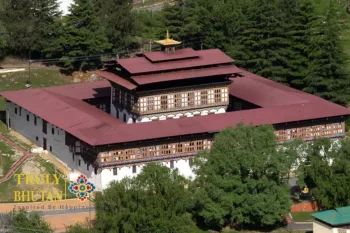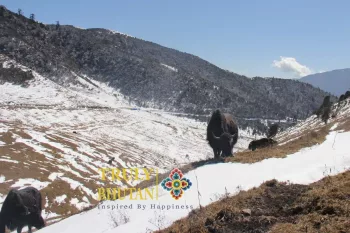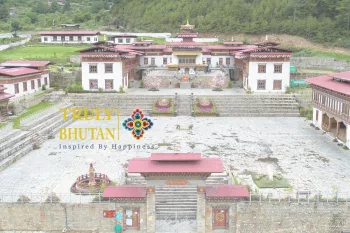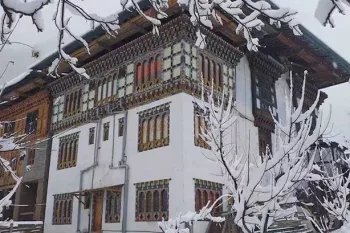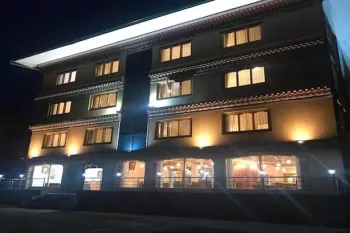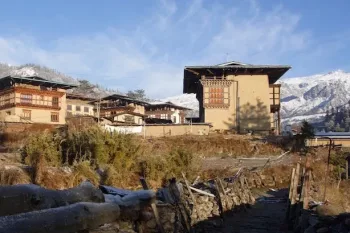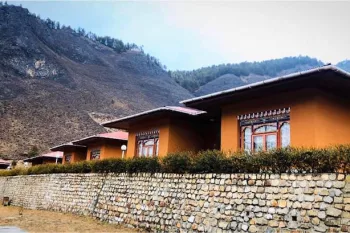Haa Dzongkhag is a picturesque valley with serene woodlands and breathtaking mountains. The pictorial hills dotted with stupas and prayer flags provide an ideal setting for trekkers and travelers wishing to explore the wild ambiance of Bhutan. Even though the place is quite remote with traditional architecture and a quaint atmosphere, Haa never fails to amaze its visitors with its magnificence and warm hospitality. Characterized by endearing mountainous terrain and unpaved roads, it has been difficult and expensive to deliver development services to the Dzongkhag, due to which most communities are isolated from roads and towns. To rouse this problem, the Dzongkhag is constrained by short growing seasons and limited arable land, as only about two percent of the land is cultivable.
Because of the dry land areas and natural pastureland, wheat is the main cereal crop cultivated, although a variety of other dryland crops such as barley and buckwheat are also grown. Potatoes constitute the principal cash crop for the Dzongkhag while apples and vegetables are also cultivated. Livestock rearing is also a key economic activity in the Dzongkhag. Because of the cold, most families raise yaks. The Dzongkhag has a good network of mule tracks and suspension bridges. More often than not, it is muddy in summer and cold in winter. The seasons suitable for trekking are spring and autumn.
Haa Visitor Information Center (HVIC)
The Haa Visitor Information Center (HVIC) is a multifaceted platform that endeavors to provide all-encompassing solutions to the myriad of needs of stakeholders in the tourism industry. These stakeholders include visitors, the community, tour operators, and the government, all of whom are essential for the development of a community-based and sustainable ecotourism program. As such, the center plays a pivotal role in fulfilling Haa Dzongkhag's mission of promoting community-based sustainable tourism.
Positioned strategically in the heart of Haa town, the HVIC's physical structure was erected by the Haa Dzongkhag Administration with financial aid from the Royal Government of Bhutan. The Royal Society for Protection of Nature (RSPN) provided the interior layouts, equipment, display, exhibits, furniture, and fixtures. Technical assistance was extended by the Japan Environment Education Forum (JEEF), which was funded by the Japan International Cooperation Agency (JICA) and Keidanren Nature Conservation Fund (KNCF) project.
The visitor center features a foyer with a seating capacity of 50, an organic cafeteria, restrooms, a display room that can hold temporary exhibitions, a learning lab for hands-on activities, and a food processing and packaging room to cater to the guests' needs.
Moving forward, the HVIC will serve as a bustling marketplace where tourism offerings, community-based tourism businesses, and authentic agro, cultural, and culinary products gain a competitive advantage by setting themselves apart from other destinations.
For further inquiries and bookings of homestays in Haa, please reach out to Mrs. Drupchu Zangmo, the Center Manager, at +975 1750 8856.
FAQs on Haa
Haa Dzongkhag is a picturesque valley with serene woodlands, breathtaking mountains, and pictorial hills dotted with stupas and prayer flags that provide an ideal setting for trekkers and travelers wishing to explore the wild ambiance of Bhutan.
The main cereal crop cultivated in Haa Dzongkhag is wheat, and the principal cash crop is potatoes. Additionally, drylands crops such as barley and buckwheat are also grown, and apples and vegetables are cultivated.
The Haa Visitor Information Center (HVIC) is a multifaceted platform that provides all-encompassing solutions to the myriad of needs of stakeholders in the tourism industry. It plays a pivotal role in fulfilling Haa Dzongkhag’s mission of promoting community-based sustainable tourism.
The nearest airport to Haa Valley is Paro International Airport, which is located about 2 hours away by car. You can also reach Haa Valley by road from Thimphu, which is about 4 hours away.
Haa Valley is a relatively less visited tourist destination, as it is remote and isolated. However, it is gaining popularity among travelers who are looking for a unique and authentic travel experience in Bhutan.
There are a variety of activities to do in Haa Valley, including hiking, trekking, bird watching, and cultural tours.
Haa Valley is generally considered safe for tourists, but it is always advisable to take necessary precautions when traveling to remote and isolated areas.

